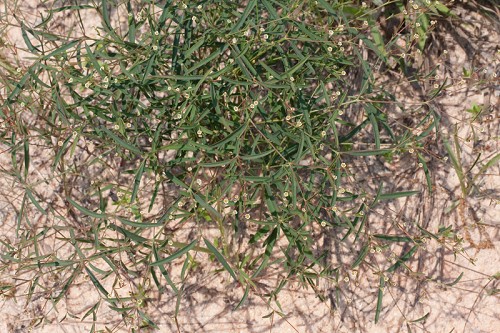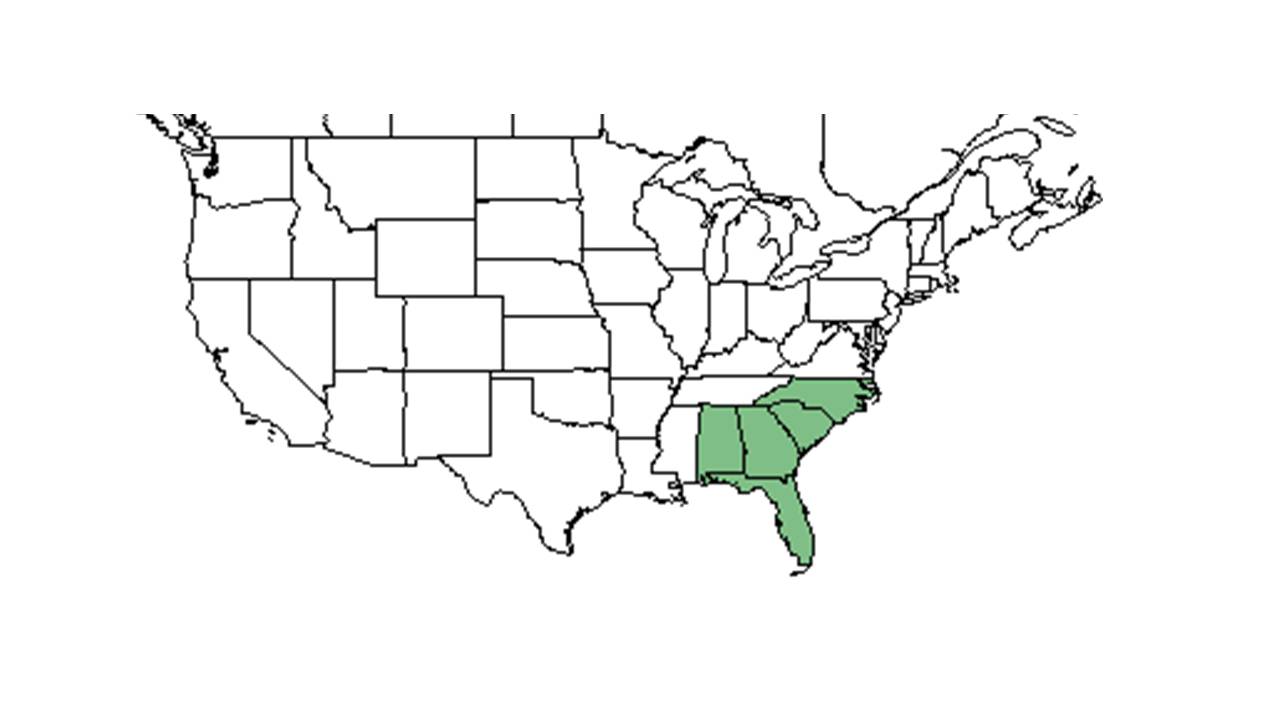Difference between revisions of "Euphorbia curtisii"
KatieMccoy (talk | contribs) (→Description) |
KatieMccoy (talk | contribs) |
||
| Line 40: | Line 40: | ||
<!--===Seed bank and germination===--> | <!--===Seed bank and germination===--> | ||
===Fire ecology=== <!--Fire tolerance, fire dependence, adaptive fire responses--> | ===Fire ecology=== <!--Fire tolerance, fire dependence, adaptive fire responses--> | ||
| − | This species has been seen in Longleaf pinelands after a prescribed burn | + | This species has been seen in Longleaf pinelands after a prescribed burn<ref name=fsu/>. |
<!--===Pollination===--> | <!--===Pollination===--> | ||
<!--===Use by animals===--> <!--Herbivory, granivory, insect hosting, etc.--> | <!--===Use by animals===--> <!--Herbivory, granivory, insect hosting, etc.--> | ||
Revision as of 14:01, 3 May 2016
| Euphorbia curtisii | |
|---|---|

| |
| Photo by John R. Gwaltney, Southeastern Flora.com | |
| Scientific classification | |
| Kingdom: | Plantae |
| Division: | Magnoliophyta - Flowering plants |
| Class: | Magnoliopsida – Dicotyledons |
| Order: | Euphorbiales |
| Family: | Euphorbiaceae |
| Genus: | Euphorbia |
| Species: | E. curtisii |
| Binomial name | |
| Euphorbia curtisii Engelm. | |

| |
| Natural range of Euphorbia curtisii from USDA NRCS Plants Database. | |
Common name: Curtis' spurge
Contents
Taxonomic notes
Synonyms: Tithymalopsis curtisii (Engelmann) Small; Tithymalopsis eriogonoides Small
Description
Generally, for the Euphorbia genus, they are "large and variable genus of annual and perennial, lactiferous, herbs, trees, and shrubs. Leaves opposite, alternate or some in a combination including whorled, entire, crenate, serrate or lobed. Flowers unisexual, borne in cyathia (involucres resembling flowers) with 4 or 5 lobes, at least one bearing a large gland, often with petaloid appendages. Each cyathium usually contains one pistillate flower and 2-15 or more staminate flowers; the staminate flower consists of a single stamen; the pistillate of a single pistil with 3-locules. Capsule 3-locular, each locule 1- seeded." [1]
Specifically, for Euphorbia curtisii species, they are "similar to E. ipecacuanhae. Stems stiffly erect, freely branched; lowers branches alternate, the upper ones opposite. Lower leaves mostly bract-like, alternate, the upper opposite, linear, lanceolate or oblong, glabrous or pubescent, 1-6 cm long, 0.5-1.5 mm wide, petioles 0.5-5 mm long. Peduncles 0.3-2 cm long. Cyathia glabrous or pubescent, 1.5-3 mm broad, petaloid appendages of glands white or pale pink, 0.8-1.3 mm long; 1-1.5 mm wide. Capsules remotely pubescent or glabrous, 2.5-3 mm long; pedicels exserted less than 1 mm from cyathia. Seeds gray mottled with reddish brown, 1.8-2 mm long." [1]
Distribution
Ecology
E. curtisii was absent before herbicide treatments near the end of the growing season but present after. This might be because of increased availability of resources.[2]
Habitat
E. curtisii occurs in wet pine flatwoods, in longleaf pinelands and savannas. This has also been spotted in human disturbed areas such as along roadsides and in edges of flatwoods. May be associated with areas that have been disturbed where the soil is a heavy sticky clay type[3].
Associated species include wiregrass, Quercus pumila, Q. minima, Serenoa repens[3].
Phenology
Fire ecology
This species has been seen in Longleaf pinelands after a prescribed burn[3].
Conservation and Management
Cultivation and restoration
Photo Gallery
References and notes
Florida State University Robert K. Godfrey Herbarium database. URL: http://herbarium.bio.fsu.edu. Last accessed: June 2014. Collectors: Robert K. Godfrey and Roy Komarek. States and Counties: Florida: Jefferson, Leon, and Wakulla. Georgia:Thomas.
Radford, Albert E., Harry E. Ahles, and C. Ritchie Bell. Manual of the Vascular Flora of the Carolinas. 1964, 1968. The University of North Carolina Press. 668-672. Print.
- ↑ 1.0 1.1 Radford, Albert E., Harry E. Ahles, and C. Ritchie Bell. Manual of the Vascular Flora of the Carolinas. 1964, 1968. The University of North Carolina Press. 668-672. Print.
- ↑ Bohn, K. K., P. Minogue, et al. (2011). "Control of invasive Japanese Climbing Fern (Lygodium japonicum) and response of native ground cover during restoration of a disturbed longleaf pine ecosystem." Ecological Restoration 29: 346-356.
- ↑ 3.0 3.1 3.2 Florida State University Robert K. Godfrey Herbarium database. URL: http://herbarium.bio.fsu.edu. Last accessed: June 2014. Collectors: Robert K. Godfrey and Roy Komarek. States and Counties: Florida: Jefferson, Leon, and Wakulla. Georgia:Thomas.